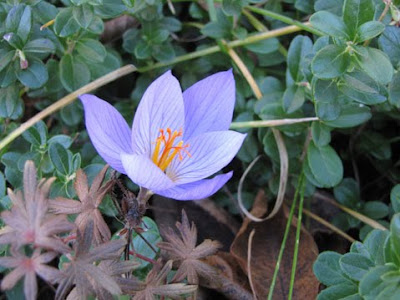The sun is low in the sky and the popple trees cast long shadows over the "courtyard." With the temperatures dropping, it's nice to have a thick blanket of snow.
The snow has ended, the cold is settling in (it's 11 degrees as I write this) and the sun is revealing a world of shadows, texture, pattern and contrast. All told, we got somewhere around 2 feet of snow in the Christmas storm that began Christmas Eve Day and ended the day after Christmas.
On Christmas Eve Day, you could still see the junipers in the front bed.
This was taken about noon and the short junipers were still showing green through the snow.
By the same time Christmas Day, they were covered.
This was taken through the window; the blotches are from the wind-driven rain. Trust me, there really are junipers under the snow in the center of this photo.
We seemed to have a little of everything Christmas Day: snow, wind, rain, freezing rain. We spent much of the afternoon trying to get a head start on digging out.
The silly dog found it hard to navigate except where snow had been cleared.
Part of digging out means raking the drifts off the roof and checking vents.
Fortunately, there was plenty of warning about the storm. So we were prepared.
The bird feeders were filled. And we had lots of birds even in the thick of snow and wind.
Goldfinches were among the most frequent visitors.
The wreath was finished and hung days earlier.
I like simple wreaths that don't scream Christmas so I can leave them up through January or longer. This is a balsam base in which I tucked a bundle of Russian cypress and black-tip wheat.
Jars of homemade jam were decorated and ready for gift-giving. A few will have to be given out later.
The spoons were a great find at IKEA. I made the tags.
The yule log was decorated and ready to illuminate our Christmas Eve dinner: rack of lamb with mustard glaze and potato and parsnip gratin (with vegetables from the garden, of course). Brian even dug through the snow to snip some fresh thyme.
Joe gave us the birch yule log years ago. This Christmas I nestled it in a bed of balsam, Russian cypress and black-tip wheat.
We treated ourselves to a really good Cabernet Sauvignon purchased years ago and held for a holiday such as this.


















































